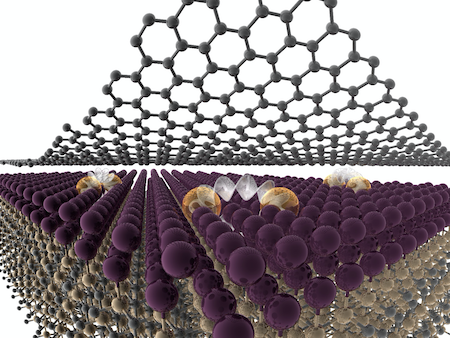 IRG1 pursues the promise of a new materials platform that stabilizes a diverse array of two-dimensional polar metals and enables their integration into ground-breaking optically and electronically active heterostructures. Metals and alloys sit at the heart of materials research, but their susceptibility to surface oxidation has impeded their investigation in atomically thin form or as pristine surfaces exposed to the ambient environment. Thus, metals are generally not considered to be electrostatically gateable, rarely strongly polar, and typically not straightforward constituents of complex quantum hetero-structures due to interfacial reactions. IRG1 surmounts these challenges and opens up new areas of fundamental science and application for metals and their alloys through in-situ encapsulation and heterostructure formation that takes advantage of the protected high-energy interface underneath epitaxial graphene and exploits a self-healing effect that yields air-stable atomically thin crystalline metals that are also polar, with exceptional nonlinear optical response and intriguing potential for impacts in quantum devices and biosensing.
IRG1 pursues the promise of a new materials platform that stabilizes a diverse array of two-dimensional polar metals and enables their integration into ground-breaking optically and electronically active heterostructures. Metals and alloys sit at the heart of materials research, but their susceptibility to surface oxidation has impeded their investigation in atomically thin form or as pristine surfaces exposed to the ambient environment. Thus, metals are generally not considered to be electrostatically gateable, rarely strongly polar, and typically not straightforward constituents of complex quantum hetero-structures due to interfacial reactions. IRG1 surmounts these challenges and opens up new areas of fundamental science and application for metals and their alloys through in-situ encapsulation and heterostructure formation that takes advantage of the protected high-energy interface underneath epitaxial graphene and exploits a self-healing effect that yields air-stable atomically thin crystalline metals that are also polar, with exceptional nonlinear optical response and intriguing potential for impacts in quantum devices and biosensing.
The IRG converges expertise in synthesis, optics and spectroscopy, transport, spintronics, device engineering, biosensing, theory and data-driven computation to exploit the unique opportunities in fundamental science and application afforded by air-stable crystalline 2D metals and alloys. These efforts will be accelerated by predictive computation to guide synthesis and application within the expansive compositional design space that CHet endows, and will open new routes to Quantum Leap, enable new sensing modalities for elucidating the Rules of Life, and provide an intriguing venue to Harness the Data Revolution. The team's efforts are organized around quantum and optical property domains, tied together by a central thrust in synthesis of novel structures, compositions and heterostructures of air-stable polar 2D metals.
Co-leads: Joshua Robinson and Jun Zhu